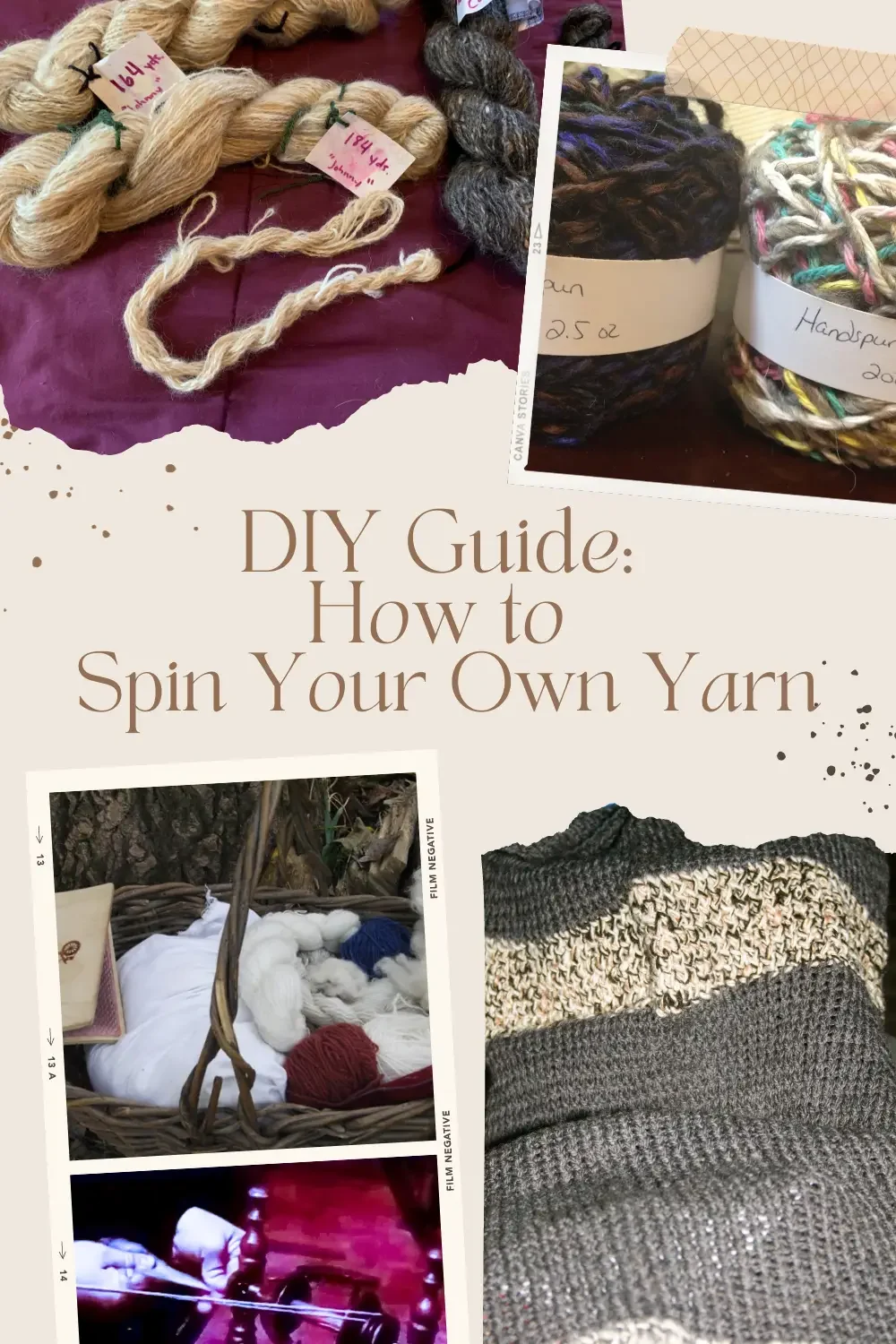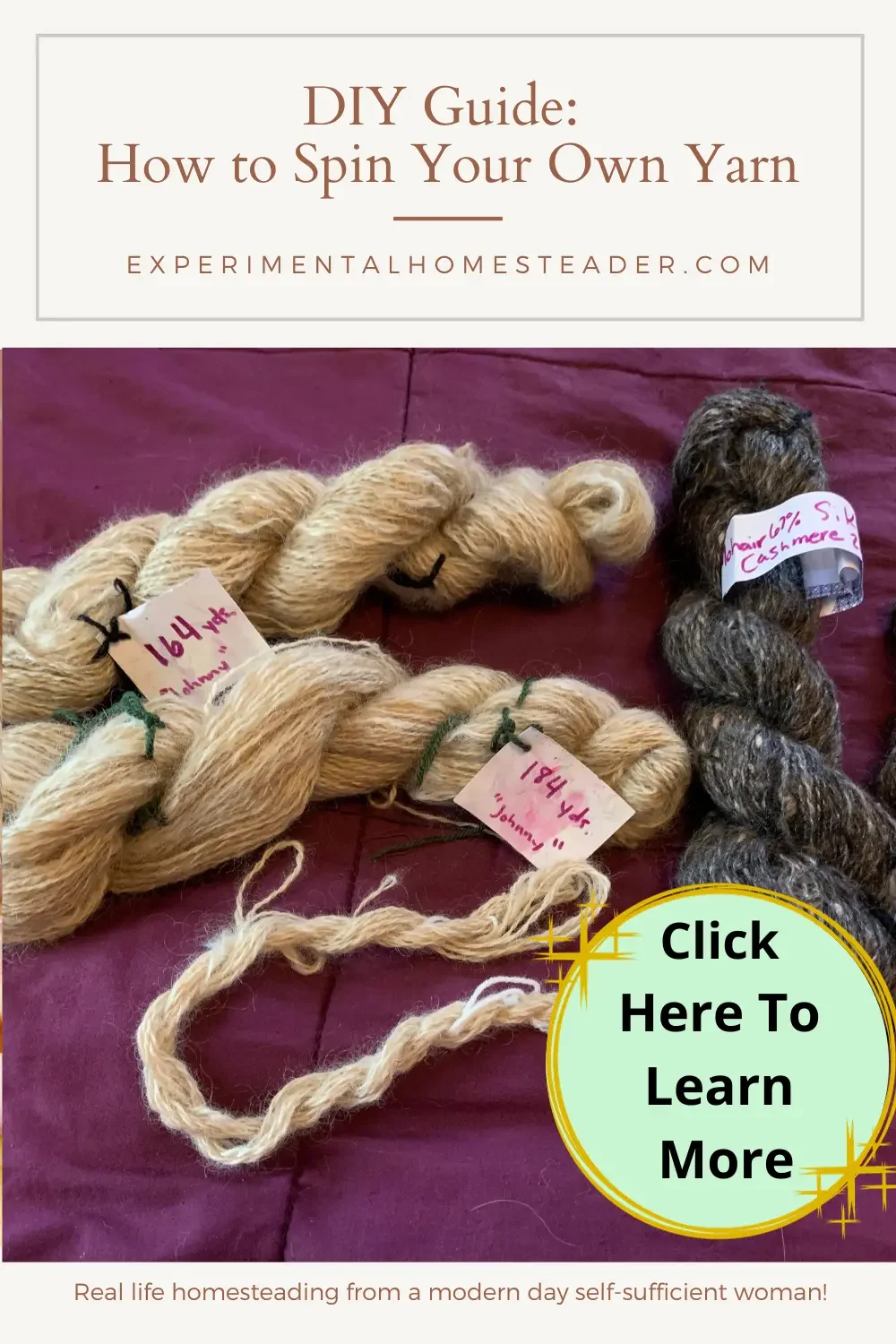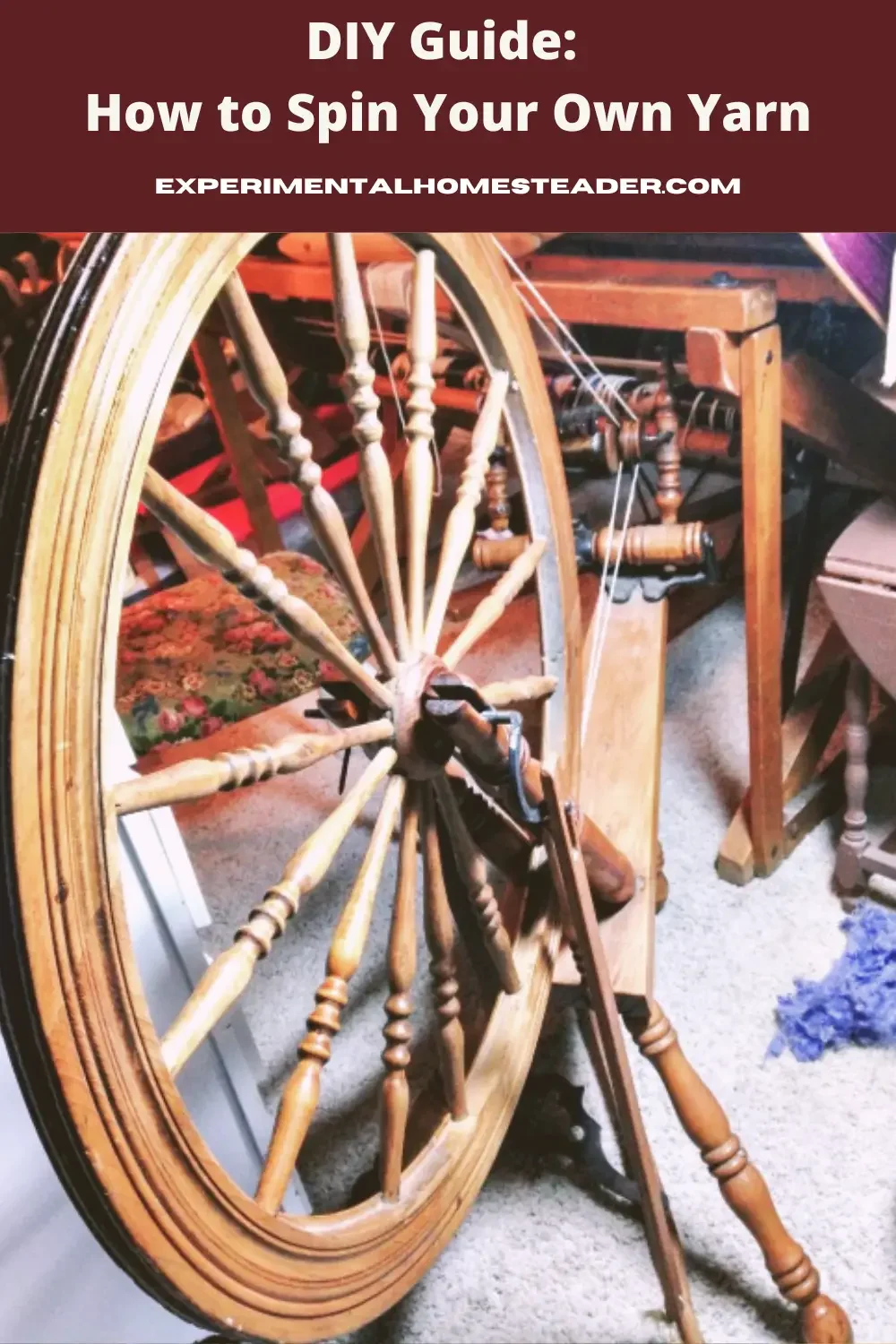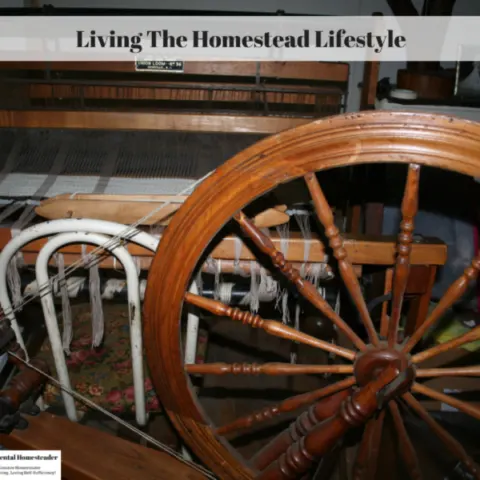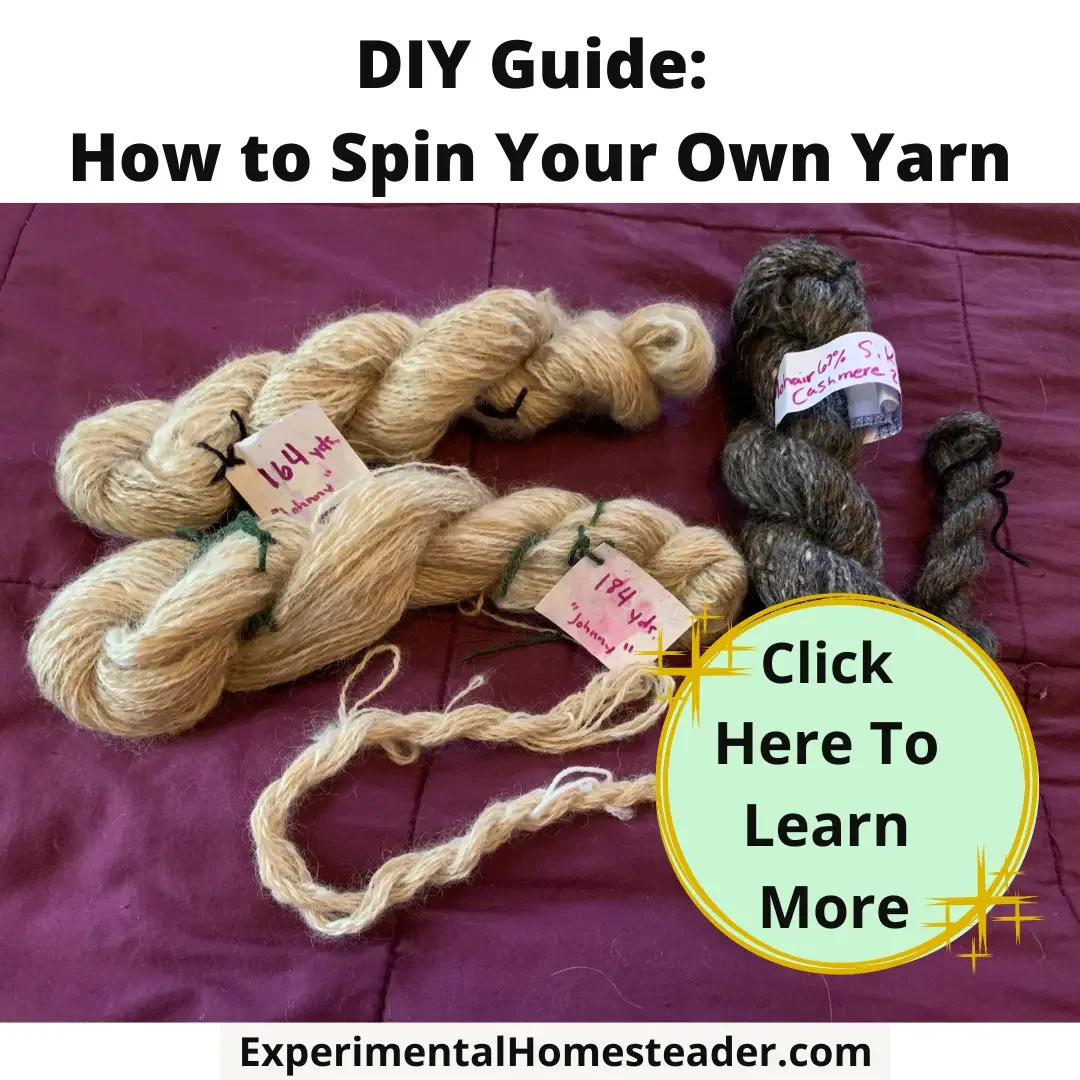When it comes to homesteading, there's an extraordinary skill that sets us apart - the art of learning how to spin your own yarn.
This skill is not just about crafting; it's about discovering a hidden treasure on your very own patch of land.
It's a journey that connects us to age-old traditions, the history of fiber arts, and the sheer magic of working with a variety of natural and synthetic fibers.
As homesteaders, we understand the value of self-sufficiency and making the most of what we have.
Spinning your own yarn is a way to be resourceful and creative, a beautiful blend of tradition and artistry.
Now, let's delve into the captivating world of how to spin your own yarn.
This journey begins with a deep understanding of spinning materials, the intricacies of different fibers, and their suitability for the hand-spinning process.
We'll explore the unique qualities of fibers like wool, cotton, and even synthetics, equipping you with the knowledge and finesse needed to prepare and manipulate these materials for the art of spinning.
So, grab your spinning wheel or drop spindle, and let's embark on this incredible adventure together!
Understanding Spinning Materials
Have you ever sat by a spinning wheel, the soft hum of rotation filling the air, and wondered what stellar yarn creation you could bring to life today?
Spinning yarn isn't just about twisting dips and dos; it's an art - a medley of science, passion, and creativity - that hinges significantly on the choice of materials.
So, let’s delve into the palette of fibers you can paint your spinning dreams with.
Wool: The Quintessential Beginner's Dream
First, we must honor the timeless charm of wool, the quintessential beginner’s dream.
Wool's crimpy nature means it boasts a natural elasticity, making it easier to spin.
It can also vary from incredibly soft, such as Merino wool, to the more tough and rough backcountry type - perfect for those sturdy, winter knits.
Plus, it's widely available – a yarn-spinner's delight.
Silk: A Luxurious Fiber Adventure
Silk takes the stage as a luxurious fiber.
Known for its glossy sheen and delightful softness, silk offers a challenging endeavor for the more advanced spinner.
Its long staple length and smooth texture may require more attention to detail, but the result is all worth the effort – naturally strong, radiant, and exquisitely soft yarn that any artist would love to work with.
Alpaca and Mohair: Elevate Your Yarn Game
For those seeking a touch of the exotic, Alpaca and Mohair offer unique characteristics that can elevate your yarn spinning game.
Alpaca is both light and amazingly heat-retentive, making it an excellent material for winter accessories.
Mohair, on the other hand, hailing from the Angora goat, has a nice luster and silkiness that can give any project a fancy flair.
Cashmere: The Epitome of Luxury
Cashmere, often synonymous with luxury, is a fiber that promises unparalleled softness and comfort.
Its fine, downy fibers are derived from the undercoat of Cashmere goats, creating yarn that feels like a dream against the skin.
When you run your fingers through cashmere yarn, you'll be amazed by the delicate touch and warmth it brings to your projects.
Working with cashmere is a special experience for any yarn enthusiast.
Whether you're knitting a cozy winter sweater, crocheting a delicate shawl, or spinning your own cashmere yarn, the result is always a masterpiece.
Cashmere projects exude sophistication and provide a level of comfort that's hard to match.
Angora - Softness Beyond Imagination
Angora, sourced from the soft undercoat of Angora rabbits, is a fiber that offers an unparalleled level of softness.
If you've ever touched an Angora rabbit, you'll know that its fur is like a cloud.
When spun into yarn, it provides an ethereal quality to your creations.
Angora requires a delicate touch and a love for the extraordinary.
The effort you put into mastering Angora is well worth the results.
From dreamy garments to cozy accessories, Angora can be used to craft a wide range of projects.
Cotton: The Beloved Underdog
Cotton is the beloved underdog in the fiber world.
Perhaps not as immediately eye-catching or luxurious as wool or silk, cotton's virtue lies in its practicality.
It's a plant fiber – so, ideal for those keen on vegan-friendly options.
Its versatility and durability offer a myriad of uses, from adorable amigurumi creatures to snuggly summer tops.
Bamboo and Tencel: Sustainable Fiber Choices
If you're looking for sustainable options that harmonize with Mother Nature, look no further than Bamboo and Tencel.
Made from fast-growing bamboo plants and wood pulp, respectively, these fibers are biodegradable, and their moisture-wicking properties make them perfect for lightweight summer clothing.
Allow curiosity to dictate your fiber selection – be it the straightforward allure of wool or the beguiling call of silk.
After all, the beauty of art resides in the magic of the experiment.
Expanding horizons in material choice will not just refine technique but will also unearth textures, hues, and delights previously unimagined.
Remember, the spinning wheel is far more than a device - it’s a vessel of creativity, transporting any willing artist into a realm where they command the color and weave of the world.
In this journey of artistic self-expression, spinning yarn is the symphony where each note reverberates in the heart of the creator, and materials play the interludes of this beautiful masterpiece.
Breathing Life into Fibers: Operating a Spinning Spindle
Just as the world of fibers offers a captivating excursion, going hands-on with a spinning spindle represents a dance between control and freedom, adding soul to those tactile threads.
Successful use of these curious contraptions depends on each artist mastering a methodical yet fluid handling technique.
Let's delve into the how.
A spinning spindle—your tool of immortality for fibers—is simple in design but powerful in action.
Comprising a whorl or weight at the bottom and a long stick shaft, they serve as catalysts for transforming loose fibers into masterpieces of yarn, woven by the principles of physics and the rhythm of creativity.
- Step One: Predrafting Fibers - Before any spinning occurs, it is essential to organize your selected fiber into a fluffy, lofty 'roving'. This process, known as predrafting, aids in evenly dispersing the fibers making subsequent spinning smoother. Lay out your chosen fibers and start pulling them apart gently, thinning the strands without breaking them. This enhances consistency and ease in later stages.
- Step Two: Attaching Fiber - Next, a leader yarn—made from a pre-existing piece of yarn—is attached to the spindle by simply tying it around the shaft just above the whorl. The main purpose of this yarn is to guide the spun fiber onto the spindle. Twist the leader yarn onto the hook at the top of the spindle, ensuring a secure connection for your fiber to catch on.
- Step Three: The Spindle Spin - The art of spinning a spindle involves two main actions – the 'spin' and the 'park'. Hold the spindle in your dominant hand and give it a good whirl, letting it hang in the air—the spin. Using the thumb and index finger of your other hand, spin the attached fiber until it twists tightly around the leader yarn—the park.
- Step Four: Drafting Fibers - Following the initial spin, keep the spindle steady in a 'parked' position, allowing you to feed the fiber onto the leader yarn. Simply pull out a small amount of fiber from the roving and allow the twist from the spindle to travel into the fibers, causing them to spin together or 'draft'.
- Step Five: Storing the Drafted Yarn - The spun yarn can then be wound onto the spindle, towards the whorl. Always remember to leave enough leader yarn to continue spinning. This cyclical process continues until the spindle is full or your fiber is spun.
The magic of a spinning spindle lies in the synchrony between the hand's careful control and the heart's daring creativity.
It takes practice, patience, and experimentation, but skill with a spindle offers the ability to transform raw, natural fibers into beautiful, usable yarn.
Within this, there lies an art form full of exploration and enchantment, open to embrace anyone with a love for creation.
Whether you're spinning sustainable bamboo or luxurious silk, the possibilities are endless, and the results are incredibly satisfying.
But above all, in embracing this ancient craft, each artist can forge a connection with their creative roots that transcends time and space.
There is something curiously magical about that, isn't there?
Embracing the Process: Advanced Techniques for Hand-Spun Yarn
The art of spinning yarn goes beyond merely attaching fiber to a spindle and spinning.
In the quest for improved quality and texture in hand-spun yarn, certain techniques come in handy.
These methods, perfected throughout centuries by master spinners, will help create yarn that is even, durable, and highly desirable.
- Understanding Twist and Ply: Learning to control the amount of twist introduced during spinning promises a vast improvement in yarn quality. Too much twist could lead to kinks and curls, while too little might result in fragile, breakable yarn. Finding a balance is key. Once comfortable with single-ply spinning, try your hand at multi-ply. Combining two or more strands of yarn not only gives a rich, complex look but also results in stronger, more balanced yarn.
- Ply-On-The-Fly Technique: This method helps to save time and makes the task of spinning less daunting. As the name suggests, it involves plying the yarn as it’s being spun. By doing so, it’s easier to maintain consistent tension and reduce undesirable overspinning or underspinning.
- Playing with Fiber Blends: Each fiber brings a unique characteristic to the spinning process. While some fibers like wool and alpaca provide warmth, others like silk or tencel add a luxurious shine. Experimenting with blending different fibers can significantly enhance the texture, appearance, and functionality of hand-spun yarn. Skull blending boards make it easier to arrange and mix fibers before spinning.
- Mastering Art Yarn Techniques: Many spinners aspire to create funky, textured art yarn. Techniques like corespinning, tailspinning, or beehives introduce an exciting array of textures and patterns. These methods require practice but, in the long term, offer a beautiful assortment of effects to play with.
- Thorough Finishing: Washing, drying, and thwacking the hand-spun yarn helps set the twist and even out the tension. A gentle bath in lukewarm water with a drop of mild dish soap will do. Once rinsed, squeeze out excess water without twisting or wringing. Give your yarn a few good thwacks against a clean surface to fluff up the fibers and then dry flat.
- Seeking Feedback and Attending Workshops: Journeying into the world of spinning can be wonderfully artistic and inherently meditative. Yet, it can also be solitary. By sharing your work with fellow spinners or enrolling in workshops, one gains valuable feedback and uncovers new insights into improving technique. The shared camaraderie can inspire remarkable growth.
- Mindfulness and Patience: Spinning is not just about the end product. The process is equally important. Savor the rhythm of the spinning wheel, feel the fibers between the fingers, and take pleasure in the journey. Patience, coupled with mindfulness, will invariably lead to higher quality, hand-spun yarn.
Honing your spinning skills is like embarking on a new artistic adventure with every skein of yarn.
Embrace the inevitable imperfections, revel in the creative process and let your imagination take wing even as your hands craft magic from the spun fibers of the earth.
Nurturing Fibers, Crafting Connections: A Personal Journey
In the heart of homesteading, I've had the privilege of nurturing a diverse family of fibers, from cotton fields to the gentle presence of Leicester Longwool sheep, the charm of Angora goats, and the sophistication of Cashmere goats and Angora rabbits.
The process of tending to these plants and animals, then crafting the fibers harvested into yarn has been a profoundly personal journey.
Embracing the Art of Spinning Yarn
Embracing the art of spinning yarn is akin to learning a language of delicacy, focus, and fine craftsmanship.
It's a journey where I've honed my skills, developed patience, and deepened my appreciation for intricate details.
It's not just about twisting fibers; it's about the meditative process of drafting, the rhythmic dance of twisting, and the gentle winding on of spun threads.
These techniques are not mere steps but the essence of crafting yarn with the utmost smoothness, consistency, and strength.
Crafting Connections through Yarn
As I spin my own yarn, I realize that it's not just about creating a material, but also about building connections.
The fibers I've raised and spun have woven their stories into my life.
They connect me to the land, the animals, and the rich history of yarn-making.
The act of spinning yarn is a bridge that spans generations, cultures, and traditions.
A Journey of Craft and Understanding
The journey of yarn spinning is about expanding not just our craft horizons, but also our understanding of the intricate processes that result in the creation of something as simple, yet profoundly complex, as a length of yarn.
It's about becoming a part of a tradition that stretches back centuries and continues to evolve with each twist of the spindle.
So, whether you're a seasoned spinner or just beginning to explore the world of yarn, remember that every strand you create is a testament to your dedication, creativity, and the deep connections you form with the art of spinning.
It's a journey worth embarking on, a craft worth mastering, and a connection worth cherishing.
Spinning Yarn: Your Comprehensive FAQ Guide
Q. What is yarn spinning, and how does it work?
A. Yarn spinning is the process of twisting fibers together to create a continuous strand of yarn. It typically involves drafting, twisting, and winding the fibers onto a spindle or spinning wheel.
Q. Is yarn spinning a difficult skill to learn?
A. While it may seem intimidating at first, with practice and patience, yarn spinning can be a rewarding and enjoyable craft to master.
Q. What are the basic tools needed to start spinning yarn?
A. You'll need fibers (like wool or cotton), a spindle or spinning wheel, and basic accessories such as a distaff, niddy-noddy, and a lazy kate.
Q. What types of fibers can I use for spinning?
A. You can use a variety of fibers, including wool, cotton, silk, alpaca, mohair, and even synthetic fibers like acrylic.
Q. Is it necessary to raise your own animals for fiber, or can I buy prepared fibers?
A. You can certainly buy prepared fibers from suppliers, but raising your own animals for fiber can be a fulfilling and sustainable option.
Q. What's the difference between a spindle and a spinning wheel?
A. A spindle is a handheld tool used for hand-spinning yarn, while a spinning wheel is a larger, more efficient tool that can spin yarn more quickly.
Q. How do I prepare raw fibers for spinning?
A. Raw fibers need to be cleaned, carded, and sometimes combed before they are ready for spinning. This process helps align the fibers for smoother spinning.
Q. What are some common spinning techniques I should learn?
A. Common spinning techniques include the long draw, worsted spinning, and supported spindling.
Q. What should I do if my yarn is too thin or too thick?
A. Practice and experience will help you achieve the desired thickness, but you can adjust the tension on your spinning wheel or use different drafting techniques to control the thickness of your yarn.
Q. How can I troubleshoot common spinning problems like yarn breakage?
A. Yarn breakage can occur due to tension issues or fiber inconsistencies. Adjust your tension, and ensure the fiber you're using is well-prepared and free of knots or tangles.
Q. Can I create unique colors and textures in my yarn?
A. Yes, you can dye your fibers before spinning to create unique colors, and you can also experiment with different fiber blends and techniques to add texture to your yarn.
Q. Is there a particular type of fiber that's best for beginners?
A. Many beginners find that working with wool is a good starting point due to its forgiving nature and versatility.
Q. What are some good resources for learning to spin yarn, both online and offline?
A. You can find tutorials, books, online forums, and local spinning groups to help you learn and connect with fellow spinners. I personally like Handwoven Magazine for offline learning.
Q. What's the most rewarding aspect of learning to spin yarn?
A. The most rewarding aspect is the sense of accomplishment and connection to a rich tradition of fiber arts, as well as the satisfaction of creating your own unique yarn.
Q. How can I care for and store my hand-spun yarn?
A. Store your hand-spun yarn in a cool, dry place away from direct sunlight. To prevent pests, you can seal it in an airtight container or use natural remedies like lavender sachets.
Q. Is it possible to make a business out of hand-spun yarn?
A. Yes, many crafters turn their passion for spinning into a profitable business by selling their hand-spun yarn, hand-dyed fibers, and finished products like scarves and hats.
Fiber Arts
Master the Art of Circular Knitting Machine for Socks
Discover circular sock knitting machines: craft your socks, explore advanced techniques, and find inspiring projects for all skill levels.
DIY Guide: How to Spin Your Own Yarn
Find out how to spin your own yarn - a journey connecting you to age-old traditions, the history of fiber arts, & the magic of natural fibers.


